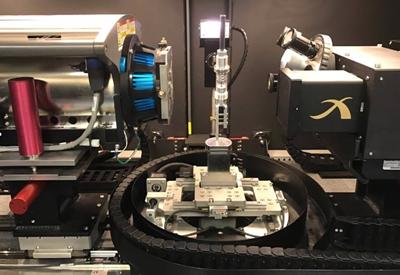
Chronological identification of deformation and/or failure mechanisms within specimens can be obtained via CT through three distinct methods. This can be achieved ex situ, where specimens are loaded normally in universal test machines and subsequently CT scanned in the unloaded state. Time-resolved data may be generated by either: (a) returning the specimen to a universal tester & reloading, or (b) by taking multiple independent specimens to specific individual loads. To avoid significant unloading, “enhanced" ex situ specimens can be similarly progressively loaded in standard universal test machines, and can then be fixed at a specific load point in a simple load frame compatible with CT scanning.
Finally, in situ experiments can be conducted with a number of axial tension and compression rigs that may be mounted within CT systems. The Custom 450/225 kVp Hutch can support in situ rigs that fit within the ~2m tall x 1m wide envelope and weigh < 100 kg. Progressive loading via a simple bolt, electromechanical screw and/or hydraulic ram have been used in our fixtures previously.
In a nutshell:
‣ 5kN CT5000 tension/compression stage available for in situ testing
‣ In-house experience for designing, modifying and building fixtures for specific in situ experiments
‣ ‘Enhanced’ ex situ capability with load transfer cartridges that maintain load during scanning
‣ Close proximity to a research labs (TSRL and heavy structures lab) with standard universal testing machines